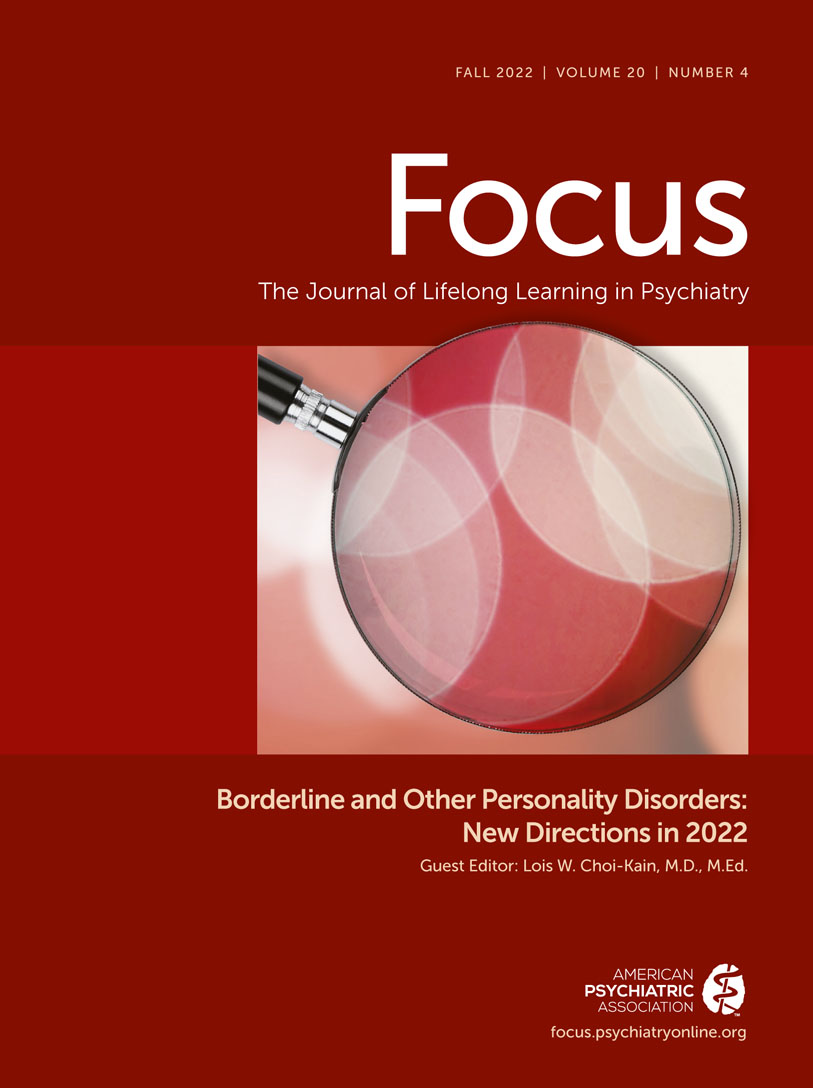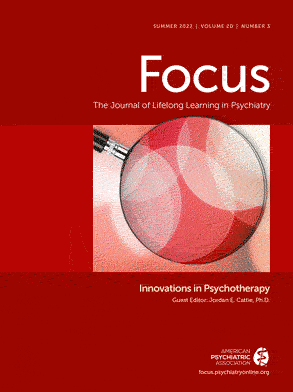How will clinicians utilize the Alternative DSM-5-TR Section III Model for Personality Disorders in their clinical work?
The Alternative
DSM-5 Model for Personality Disorders (AMPD) (
1) was developed by the Personality and Personality Disorders Workgroup for
DSM-5 (WG), for which I served as co-chair. Even in the early 2000s, as the planning stages for
DSM-5 were formalized, a strong consensus had developed in the field that the traditional categorical diagnostic system for personality disorders (PDs) was inadequate and flawed, given the dimensional nature of the PDs. The charge to the WG was to explore the feasibility of a dimensional system. The task was challenging, complex, and controversial (
2). After several iterations, the hybrid dimensional-categorical AMPD was finalized, which was recommended by the WG and the
DSM-5 Task Force to replace the
DSM-IV system. The final decision of the American Psychiatric Association, however, was to place the AMPD in Section III (Emerging Methods and Models), intended to serve as an alternative option for clinicians to use.
Along the way, a number of prominent scholars in the field of personality studies judged that, although the developing model had many positive aspects, there were concerns that it was “too complex” (
3) or that it would be “unworkable in clinical practice” (
4). In particular, Shedler and coauthors objected to including the pathological personality traits, which they referred to as “
non-clinical [italics in original] concepts drawn from academic personality psychology” (
4). Without launching here into a debate about this, suffice it to say that the very dimensional nature of personality pathology embeds it in a continuum from mixtures of healthy, adaptive traits in normal populations to extremes of selected traits that we recognize as pathology. As Gunderson himself said, “Most . . . of the
DSM-IV PDs could easily be conceptualized as severe and maladaptive variants of normal personality traits or types” (
3).
Regarding the view that the proposed model was too complicated, I would suggest that the main issue was its unfamiliarity rather than its complexity. To carry out a fair comparison, one must compare apples with apples. If one adds all criteria for all defined PDs in DSM-5 Section II and compares that total with the total number of items required to cover all of the AMPD, the number of items that need to be assessed is reduced by 43%; but, of course, nobody does that in practice. Using the traditional system in Section II, the diagnostician generally carries out a clinically informed, informal prototypical strategy. For example, a new patient has a history of emotion dysregulation, self-injurious behavior, and an incoherent life course—the clinician thinks “borderline.” The clinician then probes for more information, contacts collaterals, and reaches a provisional diagnosis. However, it is unlikely that the clinician would then survey all criteria for all nine other PDs—just, if indicated, the few that commonly co-occur—and a diagnostician utilizing the AMPD would proceed exactly the same way.
The AMPD has both consistency and flexibility. Moderate or greater impairment in functioning in a sense of self and in interpersonal relationships must be present to make any PD diagnosis. Once familiar to the clinician, this standard template easily serves as a starting place, leading to drill-down exploration of pathological personality traits. If the impairment and trait pathology correspond to the criteria for any of the six named PDs, the diagnosis can be made. If, on the other hand, impairment is present, but the patient does not fit any of the named disorders, the diagnosis is PD-Trait Specified, where the applicable trait pathology of the individual patient can be detailed.
For example, using the AMPD, a “big-picture” way to describe a hypothetical patient with borderline personality disorder would be that the patient has severe impairment in self and interpersonal functioning, along with trait pathology mainly in the domain of negative affectivity, plus aspects of disinhibition and (or) antagonism. Then, as clinical planning proceeds, the nature of the patient’s self and interpersonal impairment can be spelled out, and the trait facets in each applicable trait domain that characterize the patient can be listed, providing in-depth granularity of the individual patient’s pathology. In addition, there may be trait pathology that can be listed from other domains that are not required for the diagnosis, providing greater richness and scope to the pathological picture.
Research has shown that clinicians generally prefer the AMPD to the
DSM-IV and (or)
DSM-5 Section II approach. Morey and colleagues (
5) asked over 300 clinicians to compare the two with respect to communication with patients and with other professionals, comprehensiveness, descriptiveness, ease of use, and utility for treatment planning. In five out of six comparisons, the AMPD was judged to be equally or more clinically useful than
DSM-IV. The only exception was communication with professionals, understandable because the AMPD was largely unfamiliar to practicing clinicians when this study was carried out. In a separate study (
6), clinicians compared the two systems with respect to 11 different clinical judgments regarding differential treatment planning, optimal treatment intensity, and long-term prognosis, and the AMPD was preferred for 10 of the 11 treatment judgments. In particular, the level of severity of impairment determined for the AMPD was most consistently associated with estimating long-term prognosis. These studies were carried out shortly after introduction of the AMPD, which perhaps makes the findings surprising, as the clinicians were comparing a new and unfamiliar system with one they had utilized for decades. Since then, an extensive body of research has examined the clinical utility of the AMPD. In a summary of this work, Milinkovic and colleagues evaluated 20 published studies on this question, concluding that the “convergent, narrative synthesis of results was largely in support of the AMPD’s clinical utility” (
7). Finally, it should be noted that the 11th edition of the
ICD has a new classification system for the PDs that aligns remarkably with the AMPD (
8). In a recent report in
World Psychiatry, Mulder stated that both the AMPD and the
ICD-11 PD system “seem to be understood and preferred by clinicians” (
9).

